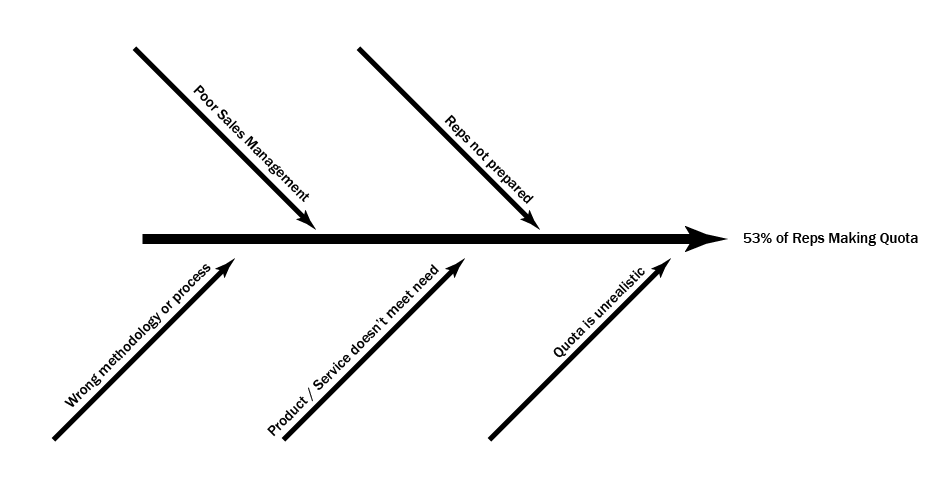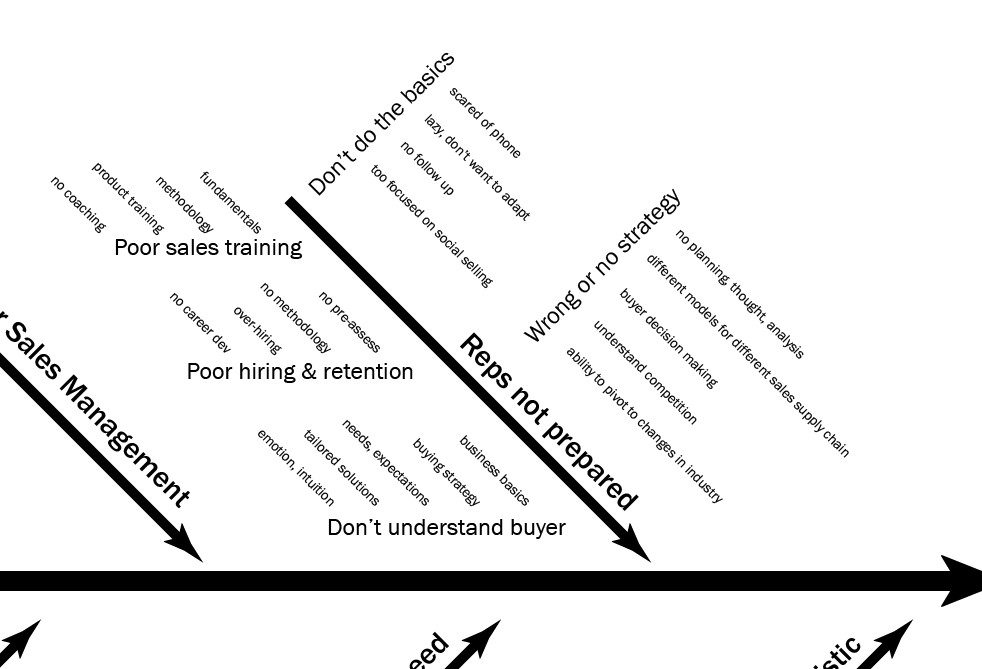Posts Tagged: Deming


Root Cause Analysis- Part 2
In the previous post, I compiled a long list of possible reasons why, in general, Sales Reps are not making their numbers.
Since we don’t have infinite time or resources, where should we focus our efforts to “move the needle” for sales? We can guess, from Pareto’s “80/20” rule, that there is a smaller number of items that have outsized impact on our results.
Fortunately, we have a number of tools to help us focus our improvement efforts. I’ll start with a few that I learned at my very first corporate job, as a file clerk at Chevron Pipeline Company, which, at the time, was pursuing a W. Edwards Deming-style quality improvement program.
In order to determine causation a number of factors need to be measured and analyzed. We’ve done the brainstorming of possible causes, and we can use a Cause-and-Effect or “Fishbone” diagram to try and understand the structure of causes.
Warning: In-the-weeds geek analysis ahead.
Start with a single horizontal line and arrow pointing to the effect.

Next we group the short list of possible causes into primary or direct causes, so.

The first thing to notice is that there are multiple primary or direct causes, all of which probably contribute (but not equally) to the effect. Second, we should be clear that this list may not be complete. Finally, some of the suggested causes may not be correct, or may be at the wrong level.
It’s important not to get caught too up in these details at this point- what we are doing is building a shared, testable model or hypothesis about what’s going on. Just know that there’s complexity here and we are probably missing some detail. “All models are false. Some are useful.”
Next, let’s take one of these branches and break it down further. The “Reps not prepared” branch is usually where we look first, so I’ll take that one.

Now we’ve organized our branch into a set of 1 primary, 5 secondary (e.g. Poor sales training) and 22 tertiary (e.g. fundamentals) contributing factors.
Why go to all this effort?
Most importantly, I would say, is that this helps avoid the “jump-to-solution” issue. “More sales training!” “Different strategy!” “Fire the losers!”
Second, nearly as importantly, we capture our thinking about the problem space in a structured communication artifact.
Finally, we can design metrics and testing to validate hypotheses before taking action, spending time and money allocating resources to projects that may or may not pay off.

Recent Comments